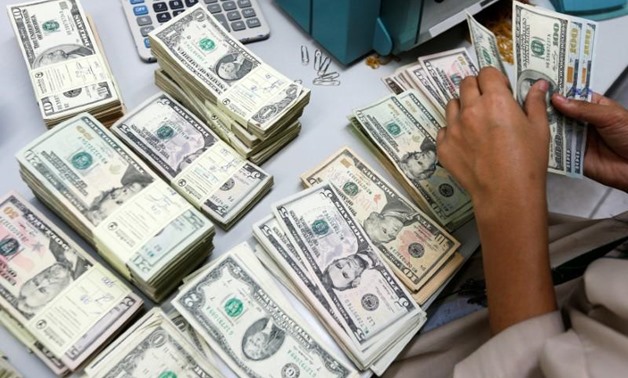
Hungry for dollars after the central bank floated the pound on Thursday, Egyptian banks are offering market rates for the greenback as they try to build their reserves before interbank trading begins in earnest next week.
But some bankers warned that a backlog of demand from businesses could revive the black market if the central bank does not inject dollars into the banking system to help smooth the transition to a floating currency.
One of the objectives for abandoning the Egyptian pound's U.S. dollar peg was to close a black market for dollars that had boomed after the central bank imposed capital controls last year. The pound had slid to a record low of 18 per dollar on the unofficial market last Sunday.
"We bought dollars from the banking system at rates between 14.7 and 16 so it's already working … We closed the deal for over $1 million and got some of it on Thursday and the rest we are getting on Sunday," said one commodity trader
"I hope the black market disappears. There's no reason for it to continue now banks are buying at equilibrium prices."
Egypt allowed its currency to fall from 8.8 to the dollar to about 14.65 in a single day on Thursday, ditching the peg that had drained the central bank's foreign exchange reserves and forced it to ration dollar supplies.
On Thursday, banks sold dollars mostly to businesses, causing confusion among ordinary customers. Though banks were open to dollar depositors and sellers over the Friday-Saturday weekend, no dollars were on offer to retail clients.
The central bank began Thursday's dramatic move by devaluing the pound to 13 per dollar before allowing it to slide further in a $100 million sale and ditching the peg.
Banks will begin freely trading currency on the interbank system from Sunday.
Some bankers were disappointed the central bank had not flooded the system with hard currency to help stabilise the pound in the early weeks of trade, saying the black market will return if banks are unable to meet pent-up demand from businesses.
Black market traders said they were offering dollars on Friday for 16.75-16.95 pounds and buying for 16.25-16.30, though volumes were low.
"If the central bank didn't inject enough dollars for the banks to start selling at a higher rate, like in the 20s even, then the black market will be back to cover people's demands," said another commodity trader.
"Either way this depends on the IMF loan because the liquidity of dollars in the central bank is not enough."
Egypt reached a preliminary deal with the International Monetary Fund in August for a $12 billion loan programme, but has yet to win final approval.
The IMF has welcomed the float. Its Egypt Mission Chief Chris Jarvis said the loan would go to the board in weeks.
Most bankers and traders interviewed did not see the black market returning as long as the central bank resists any temptation to intervene and lets the market clear via the banks.
Allen Sandeep, head of research at Naeem Brokerage, said the central bank had allowed the pound to depreciate to entice the dollars currently held outside the banks back into the system.
Able to get twice as much for them on the black market, Egyptians refused to sell dollars at the bank before the float.
"It makes sense for them to keep it weak for now as their only source for dollars… is people coming in and depositing. Those are the main flows until portfolio investors and tourists come back but this could take months," he said.
Egypt has struggled to attract dollar inflows since the 2011 uprising drove off tourists and foreign investors, key hard currency earners. It hopes the float will restore confidence.
But it was not clear how many dollars had flowed into the formal banking system since the float. Several banks said trade was slow.
"No one came to sell us dollars all day. Yesterday people during normal working hours sold us dollars, but not a lot. The total was like $20,000," one bank source said on Friday.




